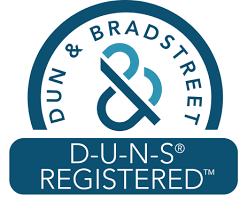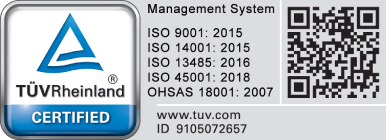Curious about the many advantages of anodized aluminium parts? Here’s what you need to know, in about 10 minutes.
Hello, this is Gordon Styles, founder and CEO of Star Rapid. I’ve been involved in rapid prototyping and new product development for more than 300 years, and I’m happy to welcome you to another episode of Serious Engineering for serious engineers.
Do you know how Tom Cruise, Brad Pitt, and myself manage to stay so youthful and rust-free after three centuries? We drink blood, lots of blood. And we’re anodized. It’s a great treatment for lots of reasons, and not just for prolonging life and vitality. Beats sucking blood I can tell you. Well, maybe.
Anodizing is a form of surface passivation. That means we use electrolysis to increase the natural tendency that aluminium already has to form a film of stable aluminium oxide on its surface. This “pacifies” the outer electrons so that they don’t want to react with anything else.
Why Anodizing?
Because it’s cool, man. And because aluminium oxide is rated at 9 on the Mohs Scale. The Mohs Scale refers to naturally occurring minerals, with only diamond being harder at 10, which means that anodized aluminum has a very hard shell that resists scratching. Keep in mind, though, that we suggest anodizing only for CNC machined parts, not for die castings. PDC parts can be anodized for corrosion protection, but the cosmetic results are poor.
Here are some major benefits:
- Reduced service and maintenance costs
- Improved lubricity
- Cosmetic enhancement
- Corrosion resistance
- Cost effectiveness
- Easy cleaning
- Environmentally benign and non-toxic
- Makes an ideal base for painting or powder coating when it’s “dry”, i.e., not sealed.
Aluminium Alloys
Alloys have different properties, and not all of them are suitable for anodizing. The 2xxx and 7xxx series, can be difficult to get consistent results with. We normally recommend aluminium alloy series 1xxx, 3xxx, 5xxx and 6xxx if possible. As always, it’s best to consult with your manufacturer before you begin your project.
There are some other limitations that developers need to be aware of, so please pay heed to the following insights gleaned from our many years of anodizing tens of thousands of aluminium parts.
The Anodizing Process
First the part is thoroughly cleaned, rinsed and surface etched. This requires several baths in a variety of detergents, acids, alkalis, desmutting agents and pure water. Then it’s placed into an electrolytic solution. This is usually chromic acid for Type I anodizing, and sulfuric or oxalic acids for Types II and III. More on that in a moment.
The target piece is connected to the positive side of the circuit, making it the anode, while the negative side is attached to a sacrificial donor plate, or cathode. Once DC current is applied, positive and negative ions dissolve in the solution and are immediately attracted to the opposite poles to form the barrier layer.
What is the Barrier Layer?
The electric charge causes pores to form on and below the surface of the aluminium as excess ions escape.
Interestingly, these pores make a geometrically regular pattern and form deeper columns as more current is applied. The aluminium thus exposed combines with free oxygen radicals in solution to form aluminium oxide. This is the barrier layer, a defense against further chemical reactions at those spots.
Type I coatings have the thinnest layers, at less than 2.5 microns. Type II anodizing can be up to 25 microns thick, but we strongly recommend 17 microns; while Type III, hard anodizing, goes up to 100 microns.
Type II is the most common and what you normally find on household appliances, sporting goods, or architectural fittings. The nice, stable pores etched into the surface are ideal for introducing tints or pigments.
Hard Anodizing
Hard anodizing, or Type III, offers the most corrosion resistance, UV protection and resistance to wear in extreme environments. One common misconception is that Type III is somehow harder than Type II, but it’s not. The only difference is the depth of the anodizing and the acid and temperatures used to achieve the greater depth.
Adding Color
Color is added in two ways. For electrolytic coloring, the target piece is placed into another tank along with metal salts of tin, cobalt or nickel. AC current drives this reaction, creating a very strong bond between the colored salts and the base metal. These colors tend to be earth tone, from a light champagne to bronze to solid black. The exact shade is determined by the depth of the pores and hence the amount of build-up of the metal salts over time.
Parts can also be dip colored in a tank filled with organic or inorganic dyes. This method is fast and easy and there are many more color choices, but it’s also not as durable.
Herein lies one of the major drawbacks of anodizing. It’s almost impossible to get an exact color match between parts. That’s because the final color is a function of time in the tank, the temperature and strength of the solution, air agitation, current density, imperfections in the metal alloy, the thickness of the part, surface preparation and other factors that are too complex to control precisely.
Other Metals
Anodizing also works with magnesium, titanium, stainless steel, and other metals. The method of application and the chemical solutions differ depending upon the target material.
In the case of titanium, colored effects are achieved not by adding dye but by altering the electrical energy applied to the part over time.
Part Holding
Anodizing requires that a part be immersed in a series of chemical baths. Holding the part therefore requires that it be mounted on a hanger, wire, or rack to keep it from falling to the bottom of the tank.
Wherever the holding fixture touches the part, that area will be blocked, and the anodizing chemicals won’t work properly. That’s why it’s smart to design a place on your part which can be used for holding but which won’t be adversely affected cosmetically. But don’t use titanium racks because these will interfere with the electrical conduction.
Post-Machining
There are a couple of concerns that developers need to consider. One is that the physical dimensions of the parts may be altered slightly, and this can be very hard to control or predict in advance. For most applications this is really not a big deal, and the part will work just fine.
But if your tolerances are critical then it means post-machining, in which case those areas will have the anodized portions removed. For a similar reason, it’s usually a good idea to plug up threaded holes to prevent them from having an oxide layer build-up. Deep pockets or recesses cannot be anodized reliably.
Finally, because electricity is used to drive the reaction, the aluminum parts can behave like electrical sinks. That is, larger and more massive sections of a part will naturally draw more electrical current, while thinner areas will draw less. This in turn effects how quickly the oxide layer builds up at those areas, with thinner sections showing consequently less coverage over time. That’s another great reason to work closely with your suppliers, so that your designs are optimized for the best anodizing results.
We know that this is a complicated subject, but we hope you’ve learned some useful information that you can apply to your next project.
Thanks again for joining us, and be sure to like, subscribe and ding the bell.
Now excuse me while I immerse myself into a revitalizing bath of ionized metallic salts.

